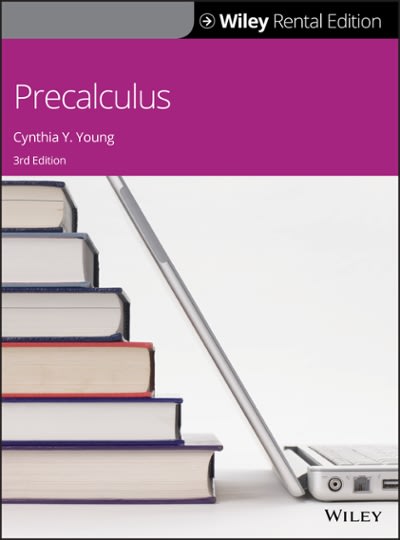Question
1. The ANOVA table below summarizes an experiment with 4 groups, each with 8 observations. Complete the table, and give the appropriate conclusion at the
1. The ANOVA table below summarizes an experiment with 4 groups, each with 8 observations. Complete the table, and give the appropriate conclusion at the .05 significance level.
Source df SS MS F
Between __ 480 ___ ___
Within __ ___ ___
Total __ 2160
2. Suppose the USGA wants to compare the mean distances reached of four different brands of golf balls struck with a driver. A completely randomized design is employed, with Iron Byron, the USGA's robotic golfer, using a driver to hit a random sample of 10 balls of each brand in a random sequence. The distance is recorded for each hit , and the results are shown below, organized by brand. We save the 4 samples of distance of each brand in R as 4 vectors.
distance.A=c( 251.2, 245.1, 248.0, 251.1, 260.5, 250.0, 253.9, 244.6, 254.6, 248.8)
distance.B=c( 263.2, 262.9, 265.0, 254.5, 264.3, 257.0, 262.8, 264.4, 260.6, 255.9)
distance.C=c( 269.7, 263.2, 277.5, 267.4, 270.5, 265.5, 270.7, 272.9, 275.6, 266.5)
distance.D=c( 251.6, 248.6, 249.4, 242.0, 246.5, 251.3, 261.8 , 249.0, 247.1, 245.9)
distance.total=c(distance.A, distance.B, distance.C, distance.D)
(note: in R, we use functions sum(), mean() and var() to calculate sum, mean and variance, respectively. )
(a) Find the total variation (TSS) of the whole data set. Note: you can find the variance of the whole data set and then multiply it by (the total sample size - 1)
(b) Find the variance for each sample.
(c) Find SSW.
(d) Find SSB.
(e) Find dfB, dfW.
(f) Find MSW and MSB.
(g) conduct the F test to answer if these four brands have the same mean distances.
3. What assumptions are required for the ANOVA F test?
4. You are comparing mean hardness for epoxy resins cured under one of four different conditions:
#1: catalyst A for 1 hour
#2: catalyst A for 2 hours
#3: catalyst B for 1 hour
#4: catalyst B for 2 hours
Denote the mean hardness under condition #1, #2, #3, #4 as u1, u2, u3, u4, respectively.
(a) Specify the contrast corresponding to the statement "The average of the means for catalyst A equals that for Catalyst B."
(b) Specify the contrast corresponding to the statement "the difference between the means at 1 and 2 hours is the same for Catalyst A as it is for catalyst B."
(c) Show that the two contrasts for part (a) and part (b) are orthogonal.
Step by Step Solution
There are 3 Steps involved in it
Step: 1

Get Instant Access to Expert-Tailored Solutions
See step-by-step solutions with expert insights and AI powered tools for academic success
Step: 2

Step: 3

Ace Your Homework with AI
Get the answers you need in no time with our AI-driven, step-by-step assistance
Get Started


